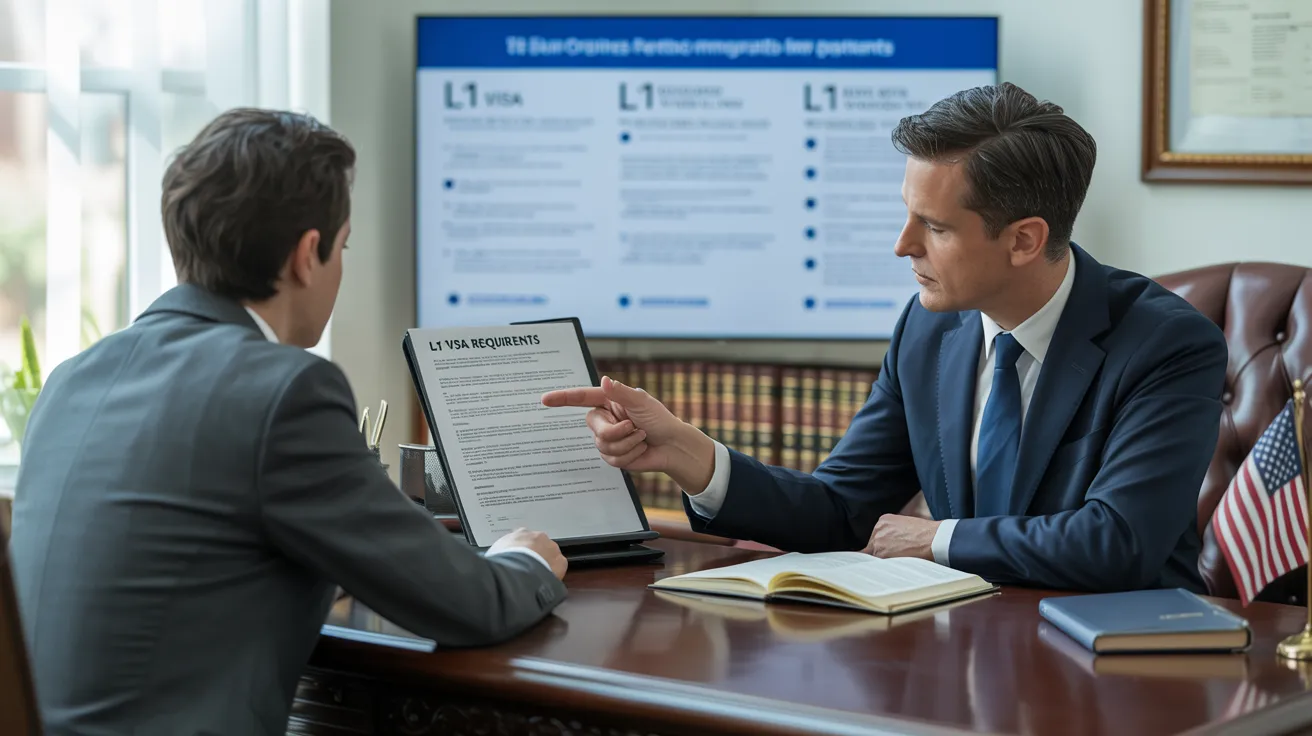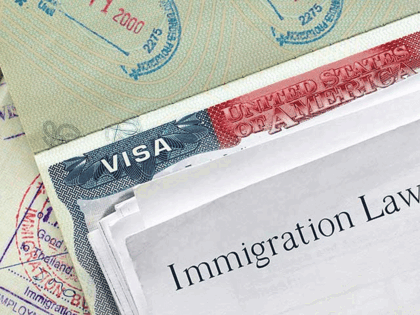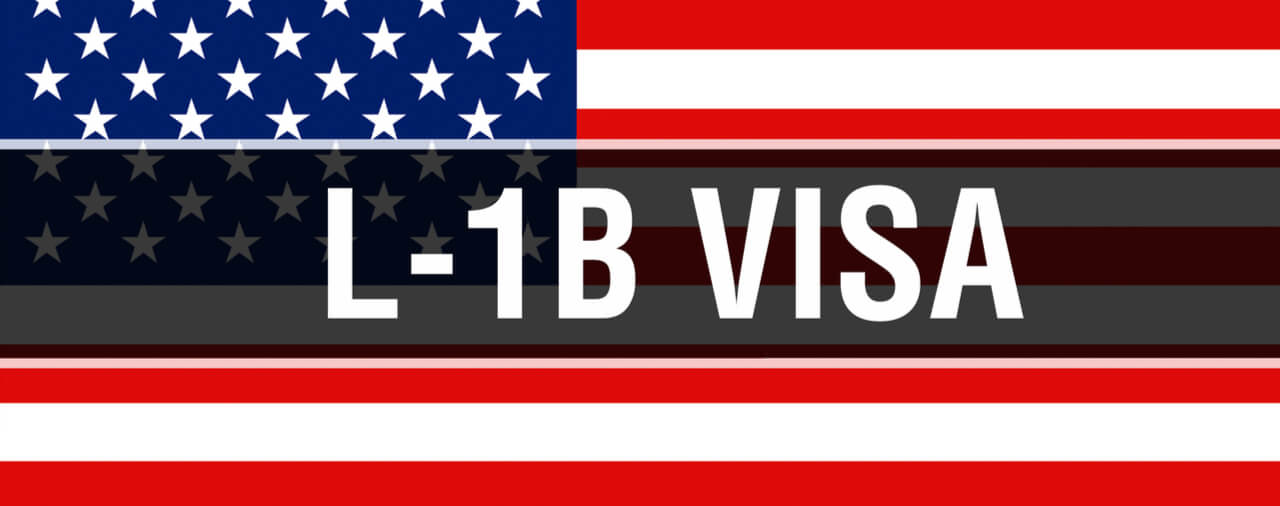Opening Opportunities: A Comprehensive Guide to the L1 Visa Process
The L1 visa procedure provides an essential pathway for international firms seeking to transfer essential staff members across boundaries. Recognizing the subtleties of eligibility requirements, the distinctions between L-1A and L-1B visas, and the intricacies of the application procedure can considerably affect an applicant's success. Steering this complicated landscape is not without its difficulties, and mindful interest to documentation and company sponsorship is crucial. As we check out the essential elements of this process, the techniques for getting over potential obstacles will certainly come to be noticeable, exposing just how notified prep work can open a world of chances.
Comprehending the L1 Visa
Understanding the L1 visa entails acknowledging its value as an important device for multinational companies seeking to move competent workers in between international offices. This non-immigrant visa group helps with the activity of execs, supervisors, and specialized expertise employees to the United States, consequently enabling organizations to keep functional continuity and harness international talent effectively. The L1 visa is split right into 2 main categories: L-1A for supervisors and executives, and L-1B for staff members having specialized knowledge.The L1 visa serves an essential duty in improving a company's one-upmanship in the worldwide market. By allowing business to transfer their key workers, services can guarantee that vital tasks are handled by qualified individuals who are already acquainted with the company's society and functional procedures. L1 Visa. This inner transfer mechanism not just cultivates understanding sharing yet likewise advertises development and partnership throughout borders.Moreover, the L1 visa is commonly favored for its fairly uncomplicated application procedure contrasted to various other visa groups, as it enables double intent, allowing holders to seek long-term residency while on a momentary job visa. This feature makes the L1 visa especially appealing for both companies and staff members, as it improves the path for competent specialists to develop lasting residency in the USA
Eligibility Standards
Qualification for the L1 visa pivots on a number of essential standards that assure both the staff member and the employer satisfy particular certifications. This non-immigrant visa is developed for international firms to move staff members from consular services to U.S. counterparts.Firstly, the company needs to be a qualifying company, that includes a moms and dad business, branch, associate, or subsidiary of an U.S. service. The firm should have been doing service for at the very least one year both in the U.S. and abroad. This ensures that the company has sufficient functional security and a legitimate presence.Secondly, the worker should hold a managerial, exec, or specialized knowledge placement. For L1A visas, the applicant should demonstrate supervisory or executive qualifications, while L1B visas concentrate on specialized expertise relevant to the organization's products, solutions, or processes. In addition, the employee needs to have benefited the international entity for at least one constant year within the last three years prior to their application.Lastly, the employee's duty in the U.S. should align with their previous placement, making sure that their abilities and knowledge are leveraged for the company's advantage.

Kinds Of L1 Visas
The L1 visa classification comprises 2 primary kinds made to assist in the transfer of workers within multinational business: the L1A visa for supervisors and execs, and the L1B visa for staff members with specialized expertise. Each kind offers unique functions and has specific qualification criteria.The L1A visa is customized for people that hold supervisory or executive placements within a business. This visa allows high-level staff members to move to an U.S. branch, subsidiary, or associate of the very same organization. Applicants for the L1A visa should demonstrate that they have been employed in a managerial or executive capacity for a minimum of one constant year within the previous three years before their application. In addition, this visa offers a much longer duration of keep, initially approved for 3 years, with the opportunity of expansions for up to seven years.In comparison, the L1B visa is planned for experts with specialized understanding related to the company's items, services, or processes. To qualify, candidates must confirm that their competence is crucial to the organization which they have actually worked for at least one constant year within the last three years in a function that needed this specialized knowledge. The L1B visa is initially granted for three years, with expansions offered for up to 5 years.Both visa kinds are vital for firms looking for to boost their global operations by leveraging competent personnel, therefore advertising innovation and performance within the U.S. market.
Application Process
Steering via the L1 copyright procedure involves a number of essential steps that have to be meticulously complied with to assure a successful outcome. The process starts with the united state company, that need to first establish qualification by showing a qualifying connection with the foreign entity and verifying that the employee satisfies the particular requirements for the L1 visa group being sought.Once eligibility is confirmed, the company launches the process by filing Kind I-129, the Application for a Nonimmigrant Worker, with the United State Citizenship and Migration Services (USCIS) This kind must be accompanied by a thorough summary of the job duties to be done, the organizational framework of both the united state and international entities, and the staff member's certifications. It's important to verify that all details is accurate and total, as noninclusions or mistakes can cause delays or denials.Upon authorization of the I-129 application, the next step includes the employee getting the L1 visa at a united state consular office or consulate in their home country. This stage needs the completion of Kind DS-160, the Online Nonimmigrant copyright, and setting up an interview. Throughout the interview, the candidate must provide proof supporting their credentials and the company's petition.After the visa is approved, the staff member can go into the USA to work in the marked duty. Overall, mindful preparation and adherence to every step of the application procedure are necessary for an effective L1 visa outcome.
Needed Documents

Essential Kinds Required
Navigating the L1 Visa process needs cautious focus to the essential forms and paperwork needed for a successful application. The primary form required is the Form I-129, Application for a Nonimmigrant Employee, which need to be finished and sent by the U.S. company (L1 Visa Requirements). This kind outlines the details of the work offer and the qualifications of the staff member seeking the L1 Visa.Alongside Form I-129, the applicant will certainly need to complete Type I-539 if coming with member of the family are likewise applying for visas. Furthermore, the employer must provide proof of the qualifying partnership in between the united state entity and the foreign entity, frequently necessitating the entry of corporate documents such as posts of consolidation or financial statements.Moreover, it is necessary to include the L Category Supplement to Type I-129, which specifies the kind of L Visa being requested-- either L-1A for supervisors and execs or L-1B for staff members with specialized knowledge. Applicants should ensure that all types are authorized and dated properly, as incomplete entries can lead to delays or denials. Effectively assembling these crucial types lays the structure for a smoother L1 copyright process
Supporting Proof Requirements
Supporting documents is crucial for a successful L1 copyright, as it corroborates the claims made in the petition. Applicants have to give a series of papers to show eligibility for the visa, which is categorized into two primary kinds: evidence of the qualifying relationship in between the U.S. and international entities and proof of the applicant's qualifications.To establish the connection, applicants must send documents such as business organizational graphes, monetary declarations, and proof of possession. These documents verify that the foreign firm has a certifying connection with the U.S. employer, whether as a parent firm, subsidiary, branch, or affiliate.For the candidate's qualifications, vital files consist of a detailed employment letter from the international company, laying out the applicant's job title, tasks, and period of work. Additionally, educational qualifications, such as levels and diplomas, must be provided to show the applicant's knowledge in the pertinent field.
Company Sponsorship Files
Company sponsorship records play an essential role in the L1 copyright process, as they verify the united state employer's dedication to the candidate's employment in the United States. These documents are essential for showing the employer's qualification to sponsor the applicant for the L1 Visa.Key documents commonly required consist of a comprehensive employment letter from the united state employer, which outlines the job title, obligations, and the nature of the employment partnership. Additionally, the employer should give evidence of the business's legitimacy, such as service licenses, income tax return, and organizational graphes, illustrating the relationship between the U.S. entity and the foreign company.Furthermore, evidence of the staff member's certifying partnership with the foreign company is required. This may consist of documentation showing the worker's role in the foreign entity, such as pay stubs, employment agreement, or performance assessments.
Common Obstacles
Maneuvering the L1 visa process offers numerous usual challenges that candidates should understand (L1 Visa Lawyer). Key concerns commonly include rigid paperwork demands, potential delays in processing times, and the need for strict lawful compliance. Understanding these obstacles can aid applicants much better prepare and mitigate dangers during their copyright trip
Documents Demands
The L1 copyright process commonly provides substantial challenges connected to paperwork needs. Applicants must supply comprehensive documentation to establish qualification, which can result in complication and potential hold-ups. Secret records include proof of a certifying relationship between the united state and international company, evidence of the candidate's work background, and thorough details regarding the job function in the U.S.One typical difficulty is collecting enough proof to show the nature of the qualifying connection. Business typically battle to present clear organizational charts or monetary statements that highlight the link between the entities. On top of that, guaranteeing that letters of assistance from companies properly reflect the candidate's job duties and qualifications is essential, as vague descriptions can cause denials.Another issue develops from the requirement for comprehensive task summaries that straighten with the L1 visa groups. Candidates need to articulate not just their current function but also their managerial or customized knowledge responsibilities plainly. This requires an extensive understanding of both the applicant's placement and the regulatory language utilized in L1 applications.
Handling Dead Time
Experiencing hold-ups in handling times is an usual difficulty encountered by L1 visa candidates, frequently causing aggravation and uncertainty. Numerous variables contribute to these hold-ups, including high application volumes, raised analysis of applications, and management stockpiles within the united state Citizenship and Immigration Solutions (USCIS) Candidates might locate that processing times can vary greatly depending upon the service center handling their application, as each facility has its own work and efficiency levels. L1 Visa In addition, the intricacy of the candidate's instance, such as the demand for extensive paperwork or clarification, can even more extend wait times.In some instances, problems related to the candidate's existing immigration condition or previous visa background might also lead to added delays, as USCIS may require additional review or details. It is important for prospects to continue to be positive during this period, keeping open communication with their companies and lawful reps to resolve any possible concerns promptly.Understanding these handling time difficulties can help L1 visa applicants get ready for feasible hold-ups and mitigate the influence on their change and profession plans. Persistence and persistance are essential merits in maneuvering this elaborate procedure.
Legal Compliance Issues
Several L1 visa candidates come across legal conformity concerns that can complicate their journey towards obtaining the visa. Understanding and adhering to the details policies set by the U.S. Citizenship and Immigration Solutions (USCIS) is important. Common challenges include showing the qualifying connection between the foreign and U.S. companies, as well as confirming that the applicant possesses the requisite specific knowledge or supervisory capacity.Additionally, applicants must offer detailed paperwork detailing their work obligations, corporate structure, and economic feasibility of the united state entity. Inadequate or inaccurate paperwork can result in hold-ups or even denials. Companies should additionally ensure that they adhere to labor legislations, consisting of wage and functioning problem standards, which can impact visa eligibility.Another typical problem involves keeping compliance with the regards to the visa once granted. Modifications in work status, work responsibilities, or company framework can demand amendments to the visa, which if not dealt with without delay can lead to legal complications. Consequently, remaining informed regarding conformity requirements and looking for legal advise when required is vital to navigate the intricacies of the L1 visa process successfully.
Tips for Success
Success in the L1 copyright process commonly hinges on meticulous prep work and interest to information. To boost your opportunities of authorization, begin by completely understanding the eligibility needs for both the L1A and L1B visa groups. Assess whether your position at the company qualifies as managerial, executive, or specialized knowledge, as this categorization significantly impacts your application.Next, collect substantial paperwork that validates your claims. This consists of business charts, in-depth work summaries, and proof of the business's operational framework. Clear and succinct evidence of the qualifying relationship in between the U.S. entity and the foreign entity is crucial. Validate that all records are organized realistically and offered in an expert fashion, as this mirrors your dedication and seriousness regarding the application.Engage the solutions of a seasoned migration attorney who specializes in L1 visas. Their competence can show vital, guiding you with complicated laws and guaranteeing that all documentation abides by current laws. Furthermore, get ready for the interview by practicing responses to typical inquiries and being prepared to review your duty and contributions to the company in depth.
Regularly Asked Inquiries
Can Family Members Members Go Along With the L1 Visa Holder?
Yes, member of the family of L1 visa holders, including partners and unmarried children under 21, can accompany the primary visa holder. They might also request L2 visas, which enable them to reside in the USA.
The Length Of Time Can I Stay on an L1 Visa?
The L1 visa enables initial remains of up to three years, with the opportunity of expansion. L1A visa owners may stay for a maximum of 7 years, while L1B visa holders can continue to be for 5 years.
Can L1 Visa Holders Obtain a copyright?
Yes, L1 visa holders can get a copyright. They may go after long-term residency through employment-based classifications, usually needing sponsorship from their company, provided they meet the essential certifications and documentation demands.
What Happens if My L1 copyright Is Denied?
If your L1 copyright is denied, you may obtain a notice outlining the reasons for rejection. You can seek to appeal the decision, reapply, or discover alternate visa options based upon your scenarios.
Exist Any Type Of Travel Constraints With an L1 Visa?
An L1 visa usually enables for worldwide traveling; nonetheless, re-entry to the U.S. L1 Visa Requirements. is contingent upon keeping valid standing. Travelers need to ensure conformity with visa conditions to avoid problems upon return
Conclusion
